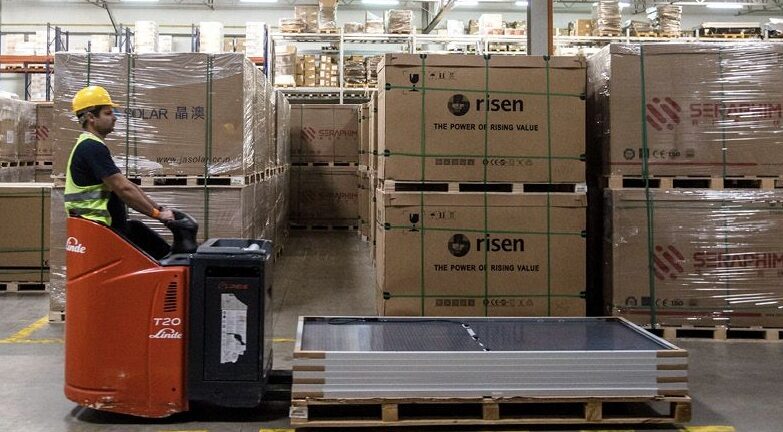California-based organic photovoltaic (OPV) start-up Next Energy Technologies has unveiled what it claims to be the world’s largest fully transparent organic PV window.
The 101.6 cm x 152.4 cm laminated transparent power-generating window was produced with the company’s pilot production line.
The window is built with a substrate, a transparent OPV layer, an edge seal, a busbar, a junction box and cover glass.
Next Energy uses automated slot-die coating manufacturing techniques to apply its proprietary OPV directly onto glass. The company’s coatings are laid on the glass, and a laser is used to scribe the OPV layer before laminating it. “Our highly refined process is a versatile deposition technique in which a solution is delivered onto a substrate via a narrow slot positioned close to the surface,” the company explained. Glass fabricators can add the slot-die process to their existing manufacturing capabilities.
“This milestone is further evidence to an industry hungry for a solution that our combination of OPV coatings and advanced manufacturing processing is working, scaling, and can be rapidly deployed,” said Daniel Emmett, Co-Founder, Executive Chairman, and CEO of NEXT. “It’s a proof point that builds high confidence in our path to enabling 152 cm x 304 cm [for] commercial production.”
Last year, the company demonstrated 68 cm x 89 cm OPV windows that were claimed to offset between 20% and 25% of the energy load of a typical commercial building, “The windows also absorb and convert infrared light, reducing the building’s heating, ventilation, and air conditioning (HVAC) demands,” the company said at the time.
This content is protected by copyright and may not be reused. If you want to cooperate with us and would like to reuse some of our content, please contact: editors@pv-magazine.com.



Had to dig through their website to find the efficiency, it’s 3.5%. Best case scenario that’s 75 watts per panel. Making that cost effective is a stretch …
For massive glass-covered buildings, the output is probably quite OK. Then add the IR blocking and it’s certainly better than regular windows.
I think the savings come from using up infrared to convert to electricity which would have ended up heading there space. But yes 3.5% efficiently is realistically on a lower end.
Depends how much more costly it is than laminated glass though?
While a single family home is going to be much better off just putting PV on the roof, high-rise buildings have a volume (proxy for energy consumption) to roof area ratio issue. this will be a game changer for high-rise buildings once its fully up and running and initial prices start to come down.
Cost and insulation value would be my biggest concern. I remember 100 watt panels were a big thing and now you can’t give them away. That said, is a great concept and I’m sure improvements on this will come along. Maybe since is clear, layering in one panel can double your output.
Retired GE Electrical Engineer